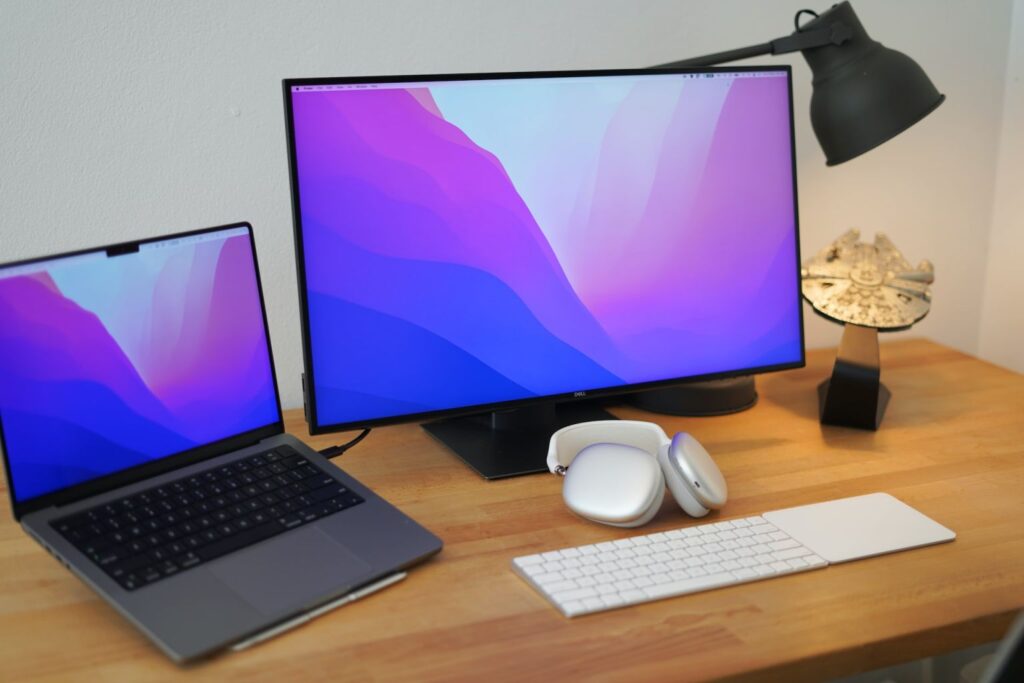Dell Monitor Connection Types: Maximize Your Experience

Dell monitors provide users with a range of connection options that enable them to connect their computers and other devices to the monitor for optimal viewing experience. This article will explain the various Dell monitor connection types, covering the different ports and cables used for connecting the monitor to the computer. By understanding these connection types, users can ensure they are using their Dell monitors correctly and getting the most out of their technology.
Dell Monitor Connection Types
Dell is a well-known brand in the computer industry, and their monitors are highly sought after for their high quality and reliability. One of the most important factors to consider when purchasing a Dell monitor is the type of connection it offers. We will explore the different connection types available on Dell monitors, including VGA, DVI, HDMI, DisplayPort, Thunderbolt, and audio connections.
VGA Connection
VGA stands for Video Graphics Array and is one of the oldest and most widely used connection types for computer monitors. VGA ports are typically found on older monitors, as well as some newer models. VGA is an analog connection, which means that it uses analog signals to transmit video and audio data. This can result in a lower quality image and sound compared to digital connection types. However, VGA is still widely used due to its compatibility with older computers and devices.
DVI Connection
DVI stands for Digital Visual Interface and is a digital connection type that is commonly found on Dell monitors. DVI uses digital signals to transmit video and audio data, which results in a higher quality image and sound compared to VGA. DVI ports are typically found on newer monitors and computers, as well as some older models.
HDMI Connection
HDMI stands for High-Definition Multimedia Interface and is a digital connection type that is commonly found on newer monitors and devices. HDMI uses digital signals to transmit video and audio data, which results in a higher quality image and sound compared to VGA and DVI. HDMI is widely used on modern monitors, as well as other devices such as game consoles, Blu-ray players, and streaming devices.
DisplayPort Connection
DisplayPort is a digital connection type that is becoming increasingly popular on newer monitors. DisplayPort uses digital signals to transmit video and audio data, which results in a higher quality image and sound compared to VGA, DVI and HDMI. DisplayPort is mainly used for computer monitors and professional displays, it is also capable of daisy-chaining multiple displays together.
Thunderbolt Connection
Thunderbolt is a high-speed connection type that is found on newer Dell monitors and devices. Thunderbolt uses digital signals to transmit video and audio data, as well as data transfer and power delivery. It is faster than DisplayPort and HDMI. It is mainly used for external hard drives, displays and other peripherals, it also allows daisy-chaining multiple devices together.
Audio Connections
In addition to video connections, Dell monitors also offer various audio connections. These include 3.5mm audio jacks for connecting headphones or speakers, as well as built-in speakers on some models. This can provide a convenient way to listen to audio without the need for separate speakers.
How to Use Dell All in One as Monitor?
The Dell All in One is a great option for those who need an all-in-one computer solution. It combines the power of a desktop, monitor and printer into one device, making it ideal for home office or small business use. We will provide step by step instructions on how to use your Dell All in One as a monitor.
First, connect your PC to the back of the Dell All in One using either HDMI or VGA cable depending on which type of port you have available. Once connected, turn on your computer and press the power button located on the front panel of the All-in-One. Then, go to “Display Settings” within Windows and select “Second Display”. Finally, adjust your settings according to your preference and you’re ready to go.
If you want to use the All-in-One as a second monitor for your computer, you will need to connect your computer to the All-in-One using a cable such as HDMI or VGA. Then you need to go to your computer’s display settings and set the All-in-One as the secondary monitor. You can drag the open windows to the second monitor to expand your desktop space.
How to Connect Laptop to Monitor Wirelessly?
It is becoming increasingly easier to connect laptops to monitors wirelessly. This can be a great way to save space, reduce clutter, and improve your productivity. Connecting the laptop and monitor wirelessly requires the use of either Bluetooth or Wi-Fi Direct technology.
The first step is to turn on both devices and make sure they are discoverable by one another. Then enable Wi-Fi Direct mode on the laptop followed by enabling the wireless display setting on the monitor. Finally, you can search for available devices in range and select the correct device name from your list of options in order to establish a connection between them both. Once connected, you should be able to access all of the content stored on your laptop directly from your monitor without any wires.
Conclusion
Dell monitors offer a variety of connection types, including VGA, DVI, HDMI, DisplayPort, Thunderbolt, and audio connections. Each of these connection types has its own strengths and weaknesses, and it is important to consider which connection types are compatible with your computer and other devices before purchasing a Dell monitor. The newer connection types such as DisplayPort and Thunderbolt offer a higher quality image and sound compared to VGA, DVI and HDMI. And they are more versatile and faster. Overall, Dell monitors offer a wide range of options to meet the needs of different users.